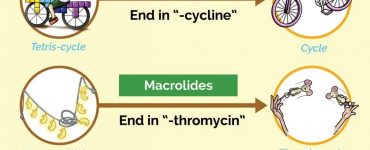The goal of the United States Medical Licensing Exam (USMLE) Step 1 is to evaluate a medical student’s ability to apply key concepts and fundamentals to medical practice.
Even though the USMLE Step 1 changed to a pass-fail exam in 2022, with 8 hours of exam time and up to 280 items, it’s always been an intricate exam students don’t take lightly. Follow our tips and advice below to learn how to pass Step 1.

How hard is USMLE Step 1?
Ask any med student, “How hard is USMLE?”, and they’ll say it’s pretty hard because of its length and content. Most students (like you) are up to the challenge, though. You’ve already learned what will be on the exam—it only takes a few weeks of studying to reinforce those concepts. If it makes you feel more confident, the USMLE pass rate in 2023 was 92% for first-time takers.
What happens if you fail Step 1?
You have up to four attempts to pass, and you cannot take Step 1 more than three times in a year. We know it’s not a good feeling to fail an exam, but you can always retake the USMLE and still pass.
The 4 Most Common Reasons for Failing USMLE Step 1 Score

Unfortunately, medical students are their own worst enemy, and the most common reasons for poor exam performance and low memory recall are self-inflicted. If you’re doing the following, it’s time to re-evaluate your study approach.
1. Misunderstanding the Exam Structure
You have to know what you’re getting yourself into, right? The USMLE Step 1 may seem like a pretty straightforward exam, but you should never judge a book by its cover. Take time to familiarize yourself with the exam format, content, and USMLE Step 1 blueprint. If you don’t, you’ll regret it.
2. Cramming
You may know this by now, but procrastination is THE worst. If you avoid creating a study schedule and plan to cram right before the USMLE 1, you won’t get the outcome you want. Don’t cram and you’ll pass without putting yourself through unnecessary anxiety and stress.
3. Overcrowding Resources
Believe it or not, there is such a thing as overpreparing. Candidates who have trouble synthesizing their exam resources can struggle with the actual exam. Don’t be that person digging for old lecture notes and purchasing every USMLE prep book, Qbank, and study course. It’s too much!
4. Passive Studying
USMLE material isn’t necessarily new. There’s just a lot of it! Passive studying is a common mistake medical students make when preparing for the exam. Avoid distractions and multi-tasking when studying.
Now that you know what NOT to do, here’s your guide on how to pass USMLE step 1!

Use a High-Yield USMLE Study Resource
It’s important to get the most out of a study tool. Your time and money are precious, and we get that! Sign up for Picmonic, a visual learning tool developed by former medical students who’ve walked in your shoes. Picmonic uses concise, impactful videos covering high-yield medical topics to help you remember more in less time.
Research-proven to improve test scores by up to 50%, it also features built-in quizzes, study playlists, and more resources to help you prepare for big medical exams like the USMLE Step 1 or just for studying throughout medical school.
Make a Goal-Oriented Study Plan
Don’t dismiss this tip! While it may seem straightforward, making an effective study plan is tougher than it seems. Your study timeline should account for your exam day, the material you need to review until then, and how long you need to study.
It can be tricky to build one on your own. That’s why Picmonic has a study scheduler so you can cover everything you need to know by your USMLE Step 1 exam date. How does it work? The smart algorithm puts forward medical topics you need to know at a comfortable pace to prepare you for exam day.
Create Better Study Habits
You may have a tried and true study method, but it’s time to mix things up. First, re-evaluate your study habits. If you prefer to study in a group, that’s fine. Just take the time to ask yourself, “Am I studying or am I socializing?”. If you’re doing the latter, you may have to try something new to make your studying more effective. It can be tricky (we know old habits die hard), but expanding your horizons may just be what you need to pass.
Practice Active Recall
Relying on rote memorization won’t get you anywhere. To truly engage with your study material and maximize recall, start active studying. Active studying includes writing things in your own words, creating flowcharts, and taking quizzes.
One active studying method may be taking a practice exam or questions with a Step 1 Qbank. However, if you need a daily study reminder, Picmonic’s daily spaced-repetition quiz can help you remember medical info before the forgetting curve sets in. It’s just what you need to start your study session and reinforce learning.
Don’t Forget to Rest
Move your body, eat, sleep, or nap! It can be easy to get carried away studying for such an important exam, so take a break and avoid studying for hours on end.
Life can also get in the way of studying, and that’s fine. Prioritizing your well-being and studying can be done harmoniously. Just be patient and kind to yourself.
Ready to dominate the USMLE step 1 with Picmonic? Sign up today!













